Paddle
Paddle
Nylon, plastic, carbon, aluminum, kevlar, glass, wood ... turned 30 ° or 45 ° right or left? With Ergoshaft? Slim lady's grip? 1-, 2-, 3- or 4-part? Dynel edge, foam core or even bubble rubber handles?
Don't buy a pig in a poke!
In order to keep an overview of the more than 350 paddle variants currently on offer, we recommend these Product data filter in the sidebar or compare in the table view at the bottom of this page using a free text search!
Ask us if you get stuck or want to test! We can give you one or the other field report free of charge.
Tip 2: Overview at the canoe association -> [external link]
For the most important paddle types, here are a few preset filters:
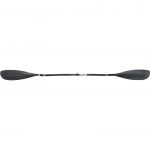
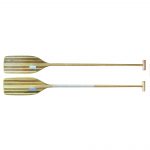
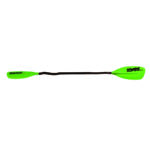
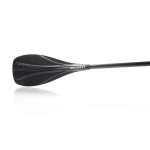
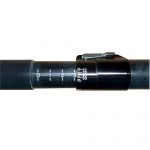
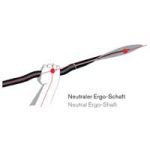
FAQ, glossary & keyword filter for >paddle
-
aluminum shaft
(2 x)The cheapest paddles come with heavy but scratch-resistant aluminum shafts. The stiffness does not come close to good fiberglass or carbon shafts. Fatigue sets in much earlier over longer distances.
-
Bundle
(1 x)This product is also available in a set / package / bundle!
-
Canadians
(2 x)Here you will find special products for canoe riders and all tube canoes.
-
Carbon shaft
(57 x)A carbon shaft stands above all for lightness and rigidity.
Different amounts of carbon in the fiber structure of the different shafts ensure optimal power transmission for every paddle stroke. In addition, the low weight prevents rapid fatigue on long tours.If you often have to look when paddling whitewater and then always throw your paddle into stony corners, you should buy a scratch-resistant fiberglass paddle.
Carbon paddles should be better packed during transport.
-
creeker
(4 x)A creeker is used in alpine white water. The large volume ensures good buoyancy to minimize the risk of getting caught between the stones on steep, rocky terrain.
Also, creekers may offer a little more security from capsizing in the easier whitewater area than river runners that are more tail-heavy. Of course, this is also a matter of training. -
Dynel edge
(3 x)Oh yeah! This is important:
- for the unwary
- or generally for tours on stony waters.
My first full-carbon paddle from Werner didn't have an impact-resistant Dynema edge (or Dynel, i.e. a very impact-resistant fiber material that is also used as the core of climbing ropes). After a few groynes on the Rhine, it broke. The second, also by Werner, showed no weaknesses thanks to this embedded edge.
So: Never again without!
-
Beginner
(1 x) -
one-piece paddle
(64 x)A one-piece paddle is obviously not divisible. Many paddle manufacturers also offer 2-, 3- or 4-piece versions of their established models. These cost a little more, but can also be stowed across the trunk or even in the boat itself as a spare paddle. And when ordering online, divisible paddles are cheaper to ship!
-
Ego / Benevolence
(22 x)For some paddlers, the wrists are not perpendicular to the forearm.
For some, the angle is up to 45°. An ergo shaft allows the wrist and elbow joints to be relieved by curving the shaft of the paddle.
There are ergo shafts (or bent shafts) with different angles. Because the curved grip area is always in a fixed position, length-adjustable ergo stocks only make sense to a limited extent. So please pay attention to the right length.
For the same reason, there are also different bicycle handlebars or curl bars.
-
flat bottom
(4 x)The flat bottom was introduced to achieve better maneuverability. If the boat does not have a pronounced keel that lies deeper in the water, then it takes less effort to turn, for example for eddying. Overall, however, the immersed surface is higher and thus also the frictional resistance. Flat bottoms can occur along the entire length of the boat, only in the maximum beam area, or only at the stern. All boat shapes that require high maneuverability are available with flat bottoms, play boats, creekers, crossovers for flat, narrow small rivers and even sea kayaks that have been optimized for surfing and playing in the surf zone are available with flat bottoms.
Advantages:
– much more manoeuvrable depending on the length of the flat areas
– the boat is a few centimeters less deep in the water at the deepest pointDisadvantages:
- a little slower
– a little heavier, because more material is needed to make flat floors stiff enough. -
fiberglass shaft
(43 x)A fiberglass shaft (GRP) is less rigid than a carbon shaft (CRP) despite being heavier. This means a slightly more sluggish conversion of the power per paddle stroke with a little more energy loss due to the cushioning. In return, the force peaks on the wrists are lower.
In addition, glass is heavier, but also less sensitive to scratches and also cheaper. For the vast majority of paddlers, GRP is the best value for money.
-
Wooden paddle
(2 x) -
Children's paddle
(4 x)Paddles for the little ones.
-
small shaft
(19 x)A small shaft is good for paddlers with small hands to make it easier to grip.
-
laminate sheet
(21 x) -
packraft
(3 x)Packrafting sometimes also bike rafting is often promoted as a new sport. It is a variety of paddling that takes you back to the roots!
From the very beginning, paddling was not only a sport but also a journey. Discover places that have no road access. There are almost no such places in Europe today.
However, in Lapland, Alaska, Patagonia, Central Asia and similar sparsely populated regions there are still waters that can only be reached by carrying your material.
And that's where the packraft comes into play: boats suitable for lakes and white water from 4 kg! A dream comes true! Trekking + paddling in a multiday adventure!”
Get advice!
-
Paddle bag
(3 x)A bag for your paddle. For careful transport or for safe stowage of the spare paddle in the boat.
-
ratchet straps
(4 x)Ratchet straps are very common for adjusting the backrests in kayaks. So you can clamp yourself into the boat for optimal boat contact.
The downside to the rope clamps now used by many retailers is wear and tear and possible susceptibility to sediment.
Spare parts help with this shortcoming, the ratchets are usually interchangeable. -
River runner
(1 x)River runner or half-slice boats combine small, playful playboats and large-volume creekers for heavy whitewater. This makes these boats perfect for learning how to kayak in a playful way. With a lot of volume in the bow and strong rocker, these boats can also be driven in heavy white water. A mostly flat tail allows playful elements like undercutting. Kayaks with a volume well below 300 liters are also often referred to as river runners.
-
Foam core
(53 x)The foam core in the paddle blade
keeps the front and back laminate layers apart, making the blade thicker without adding much weight. This makes the blade stiffer, so the force is put less into deforming plastic and more directly onto the water.
The difference is like between 2 sheets of paper and corrugated cardboard (which itself is just 2 sheets of paper + the corrugated middle paper): the corrugations keep the two layers apart, making the construction much stiffer.
-
Sea kayak
(2 x) -
Sea kayak paddle
(25 x) -
Stechpaddel
(9 x)Canoe, canoe or paddle
Here you will find a small selection, made of wood, glass or plastic from 650 grams
Touring and whitewater double paddles are available -> here
-
SUP paddle
(1 x) -
divisible paddle
(44 x)A divisible paddle can be broken down into 2, 3 or even 4 parts. This makes transport easier, for example. Eg across in the trunk or to take with you on the plane. When ordering online with parcel service delivery, divisible paddles are cheaper, because from 2m forward shipping may come into play.
With many two-piece paddles, it is also possible to vary the length and twist of the paddle.
3- or even 4-piece paddles are particularly suitable as replacement paddles for abandoned paddling expeditions, which can be easily stowed in the rear of the kayak.
-
Touring paddle
(32 x)There are basically two basic variants of touring paddles (= hiking paddles): For the flat paddling technique and the steep paddling technique.
The latter is more efficient, but requires a certain learning effort. The usual lengths start at about 205cm. From this length, we also strongly recommend divisibility. This not only saves shipping costs, but also transport damage in your own vehicle.
In principle, there are three types of divisibility:
- in firm detent , so the angle is always the same
- in variable detent, the angle is freely selectable, the length is the same
- in variable clamping, with a freely selectable angle and up to 10cm additional length.
In addition, some paddles are even used in 3 or 4 parts offered to use them as eg in a boat Replacement paddle to be able to stow away.
If you want to do long tours in a sporty way, a carbon paddle is a good idea.
-
comprehensive thigh braces
(4 x)Here we list the corresponding kayaks, where the manufacturers value comprehensive thigh supports in their standard seating systems.
This is often an advantage for good maneuvering and a stable seat in the whitewater boat.
One finds thigh braces that are too comprehensive, especially with wider thighs a bit cramped.
You have to test yourself. Many seats can also be individually adapted to body shapes. -
adjustable paddle
(32 x)All adjustable paddles. More differentiation via extended keyword search (touring, white water,...)
-
Upstream sheet
(24 x)A blade placed in front stabilizes on the forward stroke, but creates flutter more easily on a counterstroke. In addition, you get a few inches further forward, to immerse yourself. And you can pull out the blade to steer with tighter elbows.
A strongly upstream blade rewards paddlers who already have a sophisticated paddling technique. Especially if you cover a lot of distance, or if you drive tight curves with your arms narrow, you still tend to go forward, i.e. in slalom.
As a toy boat driver probably not.
-
Whitewater spraydeck
(4 x)Only spray skirts made of neoprene are used for white water. In addition, they often have Kevlar-reinforced borders, so that they stay seated on the coaming even if they capsize.
Here, when attaching the spraydeck, care should be taken to ensure that the existing grip loops can guarantee an emergency exit, since the elastic neoprene is not always so easy to push open with the knees.
-
Whitewater paddle
(69 x)The usual lengths for whitewater paddles for adults are between 192 and 200cm. Divisibility is not mandatory, but it saves shipping costs and makes transport in your own vehicle easier every time.
In principle, there are three types of divisibility:
- in firm detent , so the angle is always the same
- in variable detent, the angle is freely selectable, the length is the same
- in variable clamping, with a freely selectable angle and up to 10cm additional length.
In addition, some paddles are even used in 3 or 4 parts offered to use them as eg in a boat Replacement paddle to be able to stow away.
In order to keep an overview of the more than 350 paddle variants currently on offer, we recommend that you use the product data filter in the sidebar or compare them in the table view using a free text search!
-
Adjustable angle & length
(35 x)Mechanisms to adjust the angle and length of paddles:
- – Snaps in the aluminum shaft with different holes
- – Bayonet locks
- - Screw connections ala broomstick (almost only with SUP paddles)
- – Werner Vario division with 15° increments of snap-in and push button
- – Clamping lever made of aluminum or plastic
The latter solution has prevailed, it is used by numerous manufacturers, because it allows a relatively effortless operation even on the water (in contrast to the push button of the aluminum paddle and the broomstick connections). In addition, the clamp lever connections are also adjustable in length, 10-15cm, in contrast to the vario clamp and the button connection.
How useful is the adjustability?
- When paddling long distances, it can make sense to vary the length from time to time in order to put a different strain on the muscles. Or when different paddlers share a spare paddle. Or when they are used with boats of different widths. Length adjustability makes only limited sense, for example with ergo shafts, because the grip position also moves apart.
- Ovalized shafts are glued to the blades. So you not only turn the position of the blade, but also the ovalization. Therefore, a variation of the rotation is usually only pleasantly usable by a maximum of +/- 20° to the "design angle".
-
Additional handles on the coaming
(4 x)Normally, almost all kayaks intended for whitewater have up to three additional handles near the Sülrand in addition to the two handles at the bow and stern.
On the one hand, this makes it easier to salvage the boats in white water. But it is also good for getting out quickly in difficult terrain, you can thread the ready-to-hand sling through a handle within reach to secure it.
Also, recently, boats that don't have these handles have been banned from participating in some whitewater races.Since some manufacturers do without these handles, which we believe are quite advantageous, on some of their River Runners, we have introduced this keyword to you.

















































 + Invoice (with prepayment)
+ Invoice (with prepayment)